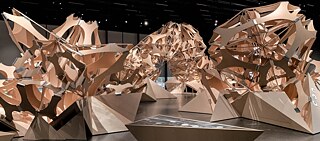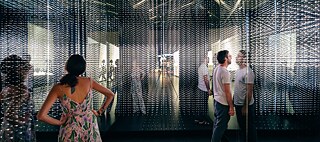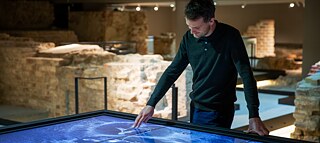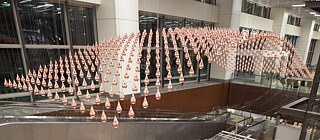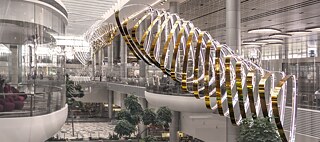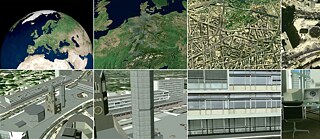Design Agency Art+Com
Art and communication blended into one
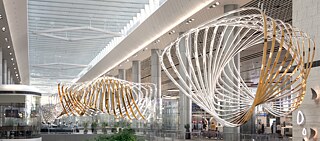
David vs. Goliath – who invented Google Earth? Thanks to a Netflix series, the design agency Art + Com is now known to a wider audience, but Art + Com has been regularly winning prizes for 30 years.
By Romy König
It sounds like the plot of a Hollywood film, and it almost turned out to be one – the Berlin design agency Art + Com designed an interactive digital globe for an art project in 1993, based on ideas by members of the Berliner Hochschule der Künste (Berlin University of the Arts). They presented the geo-application, called “Terravision”, in detail in Silicon Valley, only to experience years later how Google made internet history with its “Google Earth” programme. The programmers felt robbed of their innovation and started an – unsuccessful – legal process against the giant. Netflix produced a series about the legal dispute, and since then the agency has also been known to those who otherwise have little to do with art and design.
A harmonious three-way balance of art, communication and research
Such an experience might well have broken the spirit of other companies, but Art + Com has not been deterred. The agency’s employees from the fields of art, design, science and technology claim that they have not lost their “pioneer spirit and thirst for research” – since the battle with Google “quite a few new formats and inventions” have emerged and there has been constant investment in research activities. The agency primarily designs media sculptures and art installations for public and private clients. The works of art, exhibited in countries such as Taiwan, Mexico, Italy and Singapore, are intended to give the places in which they are erected a certain identity without necessarily fulfilling a function – such as the multi-piece wooden sculpture entitled Neo-Natur to be found in Berlin’s museum of the future – Futurium, whose aim is to embrace a new understanding of nature.
Under the aspect of communication, Art + Com also designs spaces and installations that can be used to convey complex content. In one of their latest projects in the palace cellar below the Berlin Humboldt Forum, the designers make the eventful past of the location visible and tangible by means of augmentative communication. In addition, the agency employees are also dedicated to researching new media and their possible applications, designing models of communication and interaction with the world.
The Netflix series – also a monument to Joachim Sauter
Founding member and board member, Joachim Sauter, was responsible for the agency’s approach to design, which won numerous prizes for its creativity. In the summer of 2021, the designer and university professor, who the Frankfurter Allgemeine Zeitung newspaper described as a “visionary” and “one of the most renowned media artists”, died. Sauter’s inventions and design concepts will remain, but, most of all, the story of “Terravision” that he helped to develop will never be forgotten.
